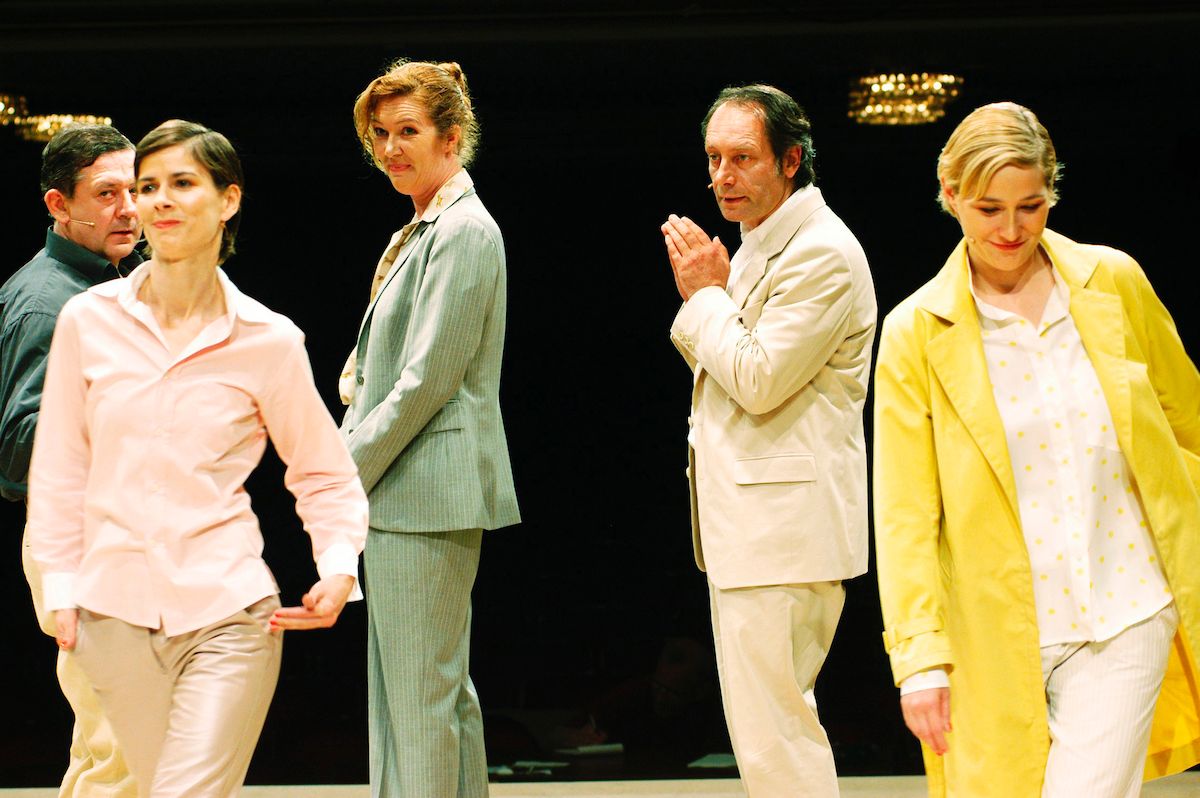
In his essay "Dance as a metaphor for thought", included in Handbook of Inaesthetics (2005), Alain Badiou lists six principles that govern dance. The first principle relates to space. Badiou quotes Mallarmé who wrote that "it seems to me that only dance requires [a real] space". To create a theatre performance an actor can just sit behind a desk and read his text. He doesn't have to read his text out loud, he doesn't even need a text nor does he need to sit behind a desk. Of course, a desk and a chair, indeed any space, constitutes a setting, for even an empty stage is a setting. But to Mallarmé and Badiou all of this remains inessential to theatre. Space is intrinsic to theatre, as Badiou writes, but it is part of the essence of dance.
I'm not sure whether I agree with Badiou (and Mallarmé) on this point. I would say that space is also part of the essence of architecture and of some forms of sculpture, painting and even literature, I'm thinking of Mark Z. Danielewski's House of Leaves here, among others. I do like his idea that in theatre, all you need is an actor, who doesn't actually have to be an actor, and time.
In Elementarteilchen, Johan Simons' adaptation of the novel of the same title by Michel Houellebecq, the actors, five in all, mostly stand on a corrugated floor on an otherwise empty stage. Sometimes the actors walk around a bit, stumbling on the uneven floor.
The piece consists of little more than this, but this little more touches precisely the right tone. The actors merely recount some passages from the novel, basically telling the biography of the book's four main characters. They don't really talk to or with each other, but about each other and, primarily, about themselves.
The acting is as matter of fact as Houellebecq's writing. Even when the actors stand very close to each other you sense the distance that separates them. With the exception of Bruno and Michel's mother, their tone is mostly flat. This works particularly well in the description of the many sex scenes or when Bruno says that he thinks he is happy.
The stage is in the middle of the audience, with seats on all sides. When they are not engaged on stage the actors sit on the first row on one side of the audience. I always like this, because the actors, or dancers, occupy an indeterminate zone somewhere in-between the audience and the stage. Are they on or off-stage? Are they still acting or have they ceased to be the characters they portray? Johan Simons cleverly plays with this ambiguity when occasionally he has an actor off-stage respond to an event on-stage.
Johan Simons has the prologue and epilogue of the novel, in which the new humans look back upon humanity, resemble the choir in Greek tragedy. Again Simons has found precisely the right tone. One actress in particular, dressed in a business suit, sounds like a marketing manager who has you doubt whether she understands herself what she is saying as she talks about metaphysics and meta-metaphysics proclaiming with great enthusiasm the benefits of the new genetically engineered human being who no longer needs to have sex in order to reproduce.
I thought that in all its simplicity and with its sparse use of theatrical means, Johan Simons' adaptation of The Elementary Particles was quite brilliant. Sometimes restraint is more powerful and more overwhelming than abundance.
Links
My review of Johan Simons: Platform.
My review of The Elementary Particles (the novel).